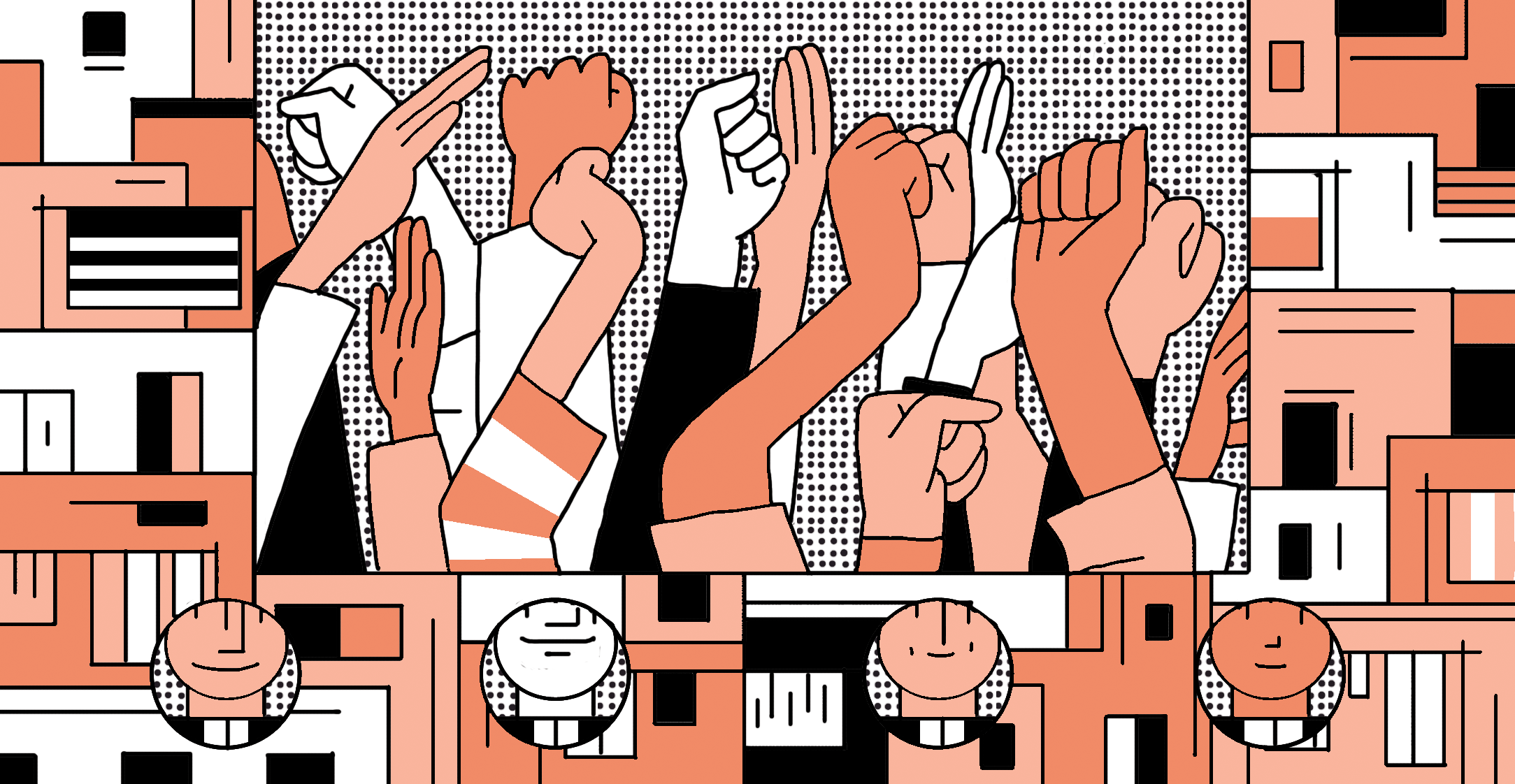This publication file is in the framework of the activities of the network of independant media on the Arab world. The regional cooperation is made by Al-Jumhuriya, Assafir Al Arabi, Mada Masr, Maghreb Emergent, Mashallah News, Nawaat, 7iber and Orient XXI.
Last summer’s demonstrations have placed the economic policies adopted by Jorrdan since the the end of the eighties at the heart of the national public debate. While it all began with an amendment to the income tax law, the “the June flareup” actually had much broader implications. The exacerbated street protests against the draft law made it possible to reopen a political forum which had quite simply vanished since the failure of the “November flareup” in 2012, and bring the tax issue to the fore, disrupting, for the moment at least, the implementation of the “extended facility” agreement signed with the IMF in 2016 in view of enlarging the tax base. While today that forum has shrunk again, as witness the police crackdown on the protestors, the fact that the debate has been extended to the overall economic approach has at least made it possible to challenge several major aspects of the official rhetoric, especially the recurrent theme of debt-reduction.
For many years now the government has indeed been stressing the need to limit the budget deficit and contain the ballooning debt in order to push through a series of measures designed to reduce public expenditures and increase government receipts: removal of subsidies for basic products (especially bread), increase of fuel and electricity prices, sales taxes on essential foodstuffs which were previously exempt and extension of the tax base with the present draft-law on income tax, which would reduce the number of exonerations. In this context, the intervention of international financial bodies and especially the IMF has been presented as a way of helping to bring about changes meant to correct the structural malfunctioning of the economy, above all as regards the public budget.
The programs implemented under the auspices of the many FMI loans did not prevent the accumulation of deficits and growing indebtedness. Consequently, the logic underlying this relationship has been challenged. The long delay before the second round of the program also undermined the oft-repeated rhetoric of Premier Omar Al Razza and others in his entourage to the effect that “with a little patience we’ll have weathered the storm.” During their last tours of the governorates to promote the income tax draft-law, the cabinet-members were jeered and sometimes even run out of town. Clearly, the confidence in that economic policy meant to help the country “weather the storm” is running out. “Ask someone who once owned a dounam (1), why he sold it and what do you think his answer will be? ‘I married my son and had to pay back some debts’ (…) The whole of Jordan has been sold and we still don’t know how to pay back that debt!” rants an inhabitant of Irbid. Words that a ministerial delegation would no doubt have dismissed as a perfectly understandable “emotional reaction” - the condescending expression used by Al Razzaz – but they illustrate the vicious circle into which Jordan has allowed itself to be dragged over the last two decades.
The yo-yo of the public debt
The government and the FMI like to present their relationship as a success story, which the regional conjuncture has prevented from developing its full potential. As proof of this they point out that during periods of political respite in neighbouring countries, Jordan experienced stability and steady growth – either during the implementation of the IMF programs or because of previous adjustments. This relationship began in 1989, with an initial standby arrangement while the government tried to contain the crisis caused by its issuing a bond loan which had ended up exhausting the country’s currency reserves and with the collapse of the exchange rates. Foreign aid and outright gifts had made it possible to make up the budgetary deficit and reduce the volume of the public debt.
Whereas it had reached 248% of the GDP between 1987 and 1989 to finally peak at 264%, the debt began a slow decline which continued until 1993 (2). The annual balance at the end of that year showed that foreign contributions amounted to five times the sum of internal loans.
This aid was part of the IMF’s and World Bank’s efforts to asssist in the structural changes undertaken by Jordan since the beginning of their relationship. In a 1996 report, the IMF described the actions carried out by Amman as “remarkable” and ascribe this to “a solid, daring and demanding process of adjustment and structural reforms, begun in 1989 and reinforced in 1992”. The goal of this “daring” process was to “reduce the malfunctions in the economy as a whole and undertake structural reforms in several sectors”. However, by 1990, the progress praised by the IMF had ground to a halt and after the first Gulf War a second standby agreement was signed in 1992 with the support of the IMF, the World Bnak and various donors and creditors .
The IMF – followed in this by the government – has always ignored the “benefits” that the country derives from the regional crises, ascribing any progress achieved to the implementation of the targeted programs, while failures are explicitly blamed on regional unrest. Yet in fact the Gulf War had a positive impact on the economic growth rates of the following years which were way beyond the IMF’s predictions and reached 14% in 1992. A situation due to the drop in imports, but also to the investments by Jordanians returning from the Gulf and to the arrival of Arab investors who helped kick-start the economy until the end of the nineties (3). The growth achieved during the second half of that decade was largely driven by the aid granted in return for the conclusion of the Wadi Araba treaty with Israel. Between 1990 and 1999, Jordan had thus received the equivalent of 622 million dollars per annum .
Despite the fact that after 1994 the public debt began to climb again, the debt-to-GDP ratio gradually fell as the latter rose, and has continued to drop almost constantly since the second half of the nineties, reaching its lowest level (55%) in 2008 (4). As for the GDP, it peaked between 2005 and 2008, owing in particular to investments by Iraqis who had found refuge in Jordan after the 2003 invasion (5). Thus the debt-to-GDP ratio remained relatively low despite the steady accumulation of debt.
“Success story”
This growth occurred at a time when the country had momentarily exited the IMF programs after a fourth “extended facility agreement” had expired in 2004. Thus at the time Jordan was seen as a veritable model: its reforms had been accompanied by the IMF and the World Bank, whose demanding directives it had scrupulously obeyed (privatisations, liberalisation of the economy and reduction of public expenditures) after which it had forged ahead on its own, increasing its growth and reducing its indebtedness. The recession that followed was claimed to be a passing phenomenon due to the global financial crisis of 2008, and the Arab Spring of 2011 which brought an influx of Syrian refugees and a drop in the tourist trade. Once again deficits increased and the government floated loans with domestic banks and the debt-to-GDP ratio climbed from 80% in 2012 to 93.4¨% in 2015 and today amounts to 96.% with a debt of 27.9 billion dinars (39.3 billion dollars).
The worsening of the public debt after 2011 is claimed by the IMF and the World Bank to be due to the horrific regional disorders and the fact that the government departed from its plans for economic reform. Yet on closer scrutiny, it appears that the brilliant picture of the first decade of the new century as painted by the IMF was less the result of a rigorous “reform” than of the determination to present Jordan as a model of the success of their programs of structural adjustment and of globalisation itself, in order to justify their continuing aid to a country which was then one of the main allies of the USA in the region. The growth achieved was based not on trade exports as is usually the case with countries whose structural adjustment programs have been “successful”, but on the financial sectors. Moreover, a number of deviations in the application of the plan were detected just before 2004. Even while the IMF and the World Bank continued to heap public praise on Jordan’s management of its economy, a number of reports published at the time by their services refer to the modesty of the progress made and admit that the “tolerance” of the FMI as regards the implementation of certain clauses dealing with the reduction of public expenditure conveyed “a false impression of the success of the structural reform” (6). Thus, while some of the economic indicators of the early 2000s are higher than the present ones, Jordan was never that paragon of virtue whose foundering on the raging seas of the Middle East the IMF and World Bank so noisily deplore today.
Moreover, the idea of Jordan as a “model” neglects the other factors which led to the increase after 2008 of the debt-to-GDP ratio (the internal debt, mostly). Confronted with the urgent need to restore the confidence shaken by the international financial crisis, the banks – especially the American banks – were obliged to offer very low interest loans, which gave the local establishments an opportunity to borrow on the foreign market and then lend to the government at higher rates. This use of local banks to cover the budget shortfall went hand in hand with an accelerated resumption of Jordan’s indebtedness. The volume of the internal debt, which in 2008 surpassed the external debt was never again to diminish, representing 51.6 % of the GDP in the second quarter of 2018 as against 39.8% for the external debt . With the revision of the pubic debt regime in 2001, the maximum percentage allowed for the gross public debt within the GDP was raised to 80% as against 60% for the internal debt.
Today, the IMF has cautiously started to beleve again in the Jordanian model, and hence a new agreement of “extended facilitation” for the period 2016-2019 was approved by its executive board. The 723 million dollars made available are meant to “give fresh vigour to the process of financial regulation with an eye to gradually reaching a reduction of the public debt and the implementation of large-scale structural reforms” said the press release. A declaration from the Deputy Managing Director of the IMF attests to this moderate optimism: “Jordan has carried out positive economic action in a difficult external environment (…) but the possible drop in economic growth, the rise in unemployment and a delicate economic conjuncture are such that perseverance in the application of the required reforms remains an indispensable element in the preservation of these gains”.
Words which illustrate perfectly the vicious circle in which Jordan is trapped as regards its relationship with the IMF. The process of financial regulation meant to reduce the debt has indeed become an objective in its own right, unrelated to the quest for growth, the reduction of unemployment and the alleviation of social hardships… problems all perceived as mere inconveniences which have to be put up with while forging ahead with reforms aimed at reducing the debt. The government which has promised several times to respect the IMF plan can thus confidently announce it will “do away with exonerations from the public sales tax and customs taxes for as long as the program lasts”.
But the government has entered the second phase of the vicious circle. Defending the draft law on income tax, the Premier stated that the IMF insisted on the need to amend the law to include new social categories in the fiscal base and reduce the number of exonerations. The government, which imagined it could achieve the same results through its fight against tax evasion, finally agreed to that demand because the slightest doubt concerning Jordan’s financial stability was likely to result in the downgrading of the country’s sovereign rating which would restrict its capacity to borrow abroad. The capacity to borrow has also become an end in itself just like - though paradox it may be – the reduction of the public debt. And it is in the name of this objective that very controversial policies have been decreed.
Of course, none of this addresses the issue of the democratic adoption of these policies. In addition to the fundamental hiatus implicit in the so-called democratic appointment of the Prime Minister directly by the King in the absence of any parliamentary debate, there is the fact that many “reforms” went into effect during the two years of legislative void that followed the dissolution of Parliament in 2001. During that period, the government adopted 211 provisional laws, put into effect with the King’s approval and without any parliamentary debate. These texts, dealing with privatisations, income and sales taxes, customs duties and incentives for investment, laid down the guidelines for the “reform” without consulting the legislative branch and hence undemocratically (7).
This contempt for democracy is not specific to the Jordanian authorities. In a declaration that created a piblic outcry, the Deputy Prime Minister, Rajai Muasher reported in the following terms a part of a dialogue with the IMF concerning the latest income tax draft law: “Once we had come to an agreement over the income tax law, we were asked to guarantee that it would be passed by Parliament” And Muasher added that as it was unable to provide such a guarantee, the government rejected that demand and sent the IMF videos showing the protests that greeted the tour of the ministerial delegation in the governorates, demonstrating that it was not so simple to “convince” the population that the law was well-founded. Thus we see how little the IMF cares about democracy when it is determined to obtain the implementation of “reforms” which the government continues to bow down to. The spiral of indebtedness into which Jordan has been dragged by the IMF continues to be a crashing headache, with its crazy logic and the popular protests it generates.
____________________
Doa Ali
managing editor of the online magazine 7iber, based in Amman. She writes and translates on social and political issues and has recently finished a Masters dissertation in human rights, culture and social justice at Goldsmiths University in London.





